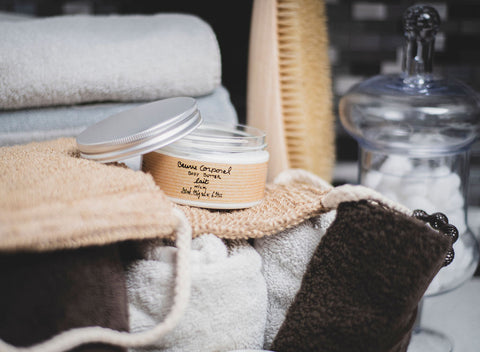Next up, we’re exploring lotion as part of our ‘Then & Now’ series. When were lotions created and how do they actual work? What is the difference between lotions and creams? Keep reading to find out.
How were lotions created?
Lotions can be traced all the way back to Ancient Sumerian salves from 3000 B.C.E. These salves were made from natural ingredients like pulverized plants and tree oils to help protect their skin from the elements.
The Ancient Egyptians also understood the importance of protecting skin from harsh climates like extreme heat. But they were interested in their ability to improve the look of skin as well. Queen Cleopatra bathed in milk to moisturize her skin and used scented oils to keep her skin feeling soft. Meanwhile, Queen Hatshepsut’s lotion made of nutmeg oil, fats and benzopyrene may have eventually killed her. Benzopyrene is a dangerous carcinogenic.
There are written records that suggest Ancient Greeks used a mixture of bread and milk to pat down their faces before bed as a sort of night cream.
During the Regency period in England, moisturizers became popular for their ability to soften and whiten the skin. One popular mixture was created with ground white lead, almond oil, and lavender oil. Unfortunately, this combination was also a deadly one. However, the use of lead persisted for years.
Most creams and lotions used animal or plant-based oils and they were created at home. They became more widely and commercially available with the addition of mineral oils and preservatives, which extended the shelf-life of the moisturizers.
How do lotions work?
A lotion is a liquid that is applied externally to the skin for cosmetic or medical reasons. It works by replenishing the water content of your skin.
Your skin, the largest organ in the human body, is made up of three layers. There is your epidermis, dermis, and hypodermis. Most lotions work by improving the water content in your top layer of skin, the epidermis, allowing the cell membranes to rehydrate and help to prevent losing too much water from your skin. This keeps your skin healthy and helps it to feel soft.
What is the difference between a lotion and a cream?
The main difference between lotions and creams is their water content. A lotion has a much higher water content than a cream. It also has less oil than a cream. Since lotions have more water in them, they are less greasy and absorb more easily into your skin. This makes them great for daily use.
Meanwhile, a cream is made of roughly fifty percent water and fifty percent oil. This makes creams thicker, and well suited to create a barrier on your skin to help keep water in. Creams may feel heavier, but they are better for hydrating very dry or cracked skin.
Why are lotions important today?
Lotions are an essential part of any modern skincare routine for much the same reasons that the Ancient Egyptian used them. They help to protect our skin from external damage, like the weather, while helping to improve the appearance of the skin.
But today, our skins face an even wider range of irritants than Ancient Egyptians. Harsher chemicals and air pollution can severely dry out your skin. We also shower a lot more in hot water, which strips our skin of natural moisture. This is the primary reason you should always moisturize after taking a shower or bath.
Lotions and moisturizers are also extremely popular today because they help to prevent signs of aging. Moisturizers can help minimize the look of wrinkles and stimulate your collagen by staying hydrated.
Which do you prefer – lotions or creams? We’d love to hear from you.











